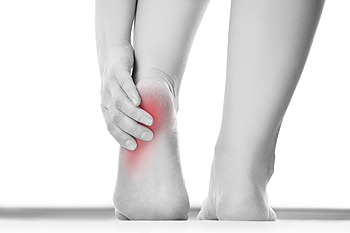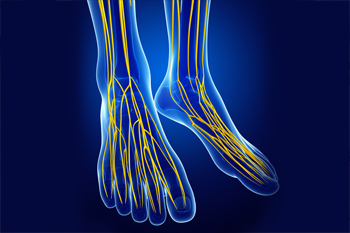Copyright © Michigan Foot and Ankle | Site Map | Nondiscrimination Policy | Design by: Podiatry Content Connection
April 2021
How Children Can Harm Their Feet Playing Dress-Up
While kitten heels may be all the rage for pint-size fashionistas, any type of elevated shoe is not appropriate for a growing child’s foot for a variety of reasons. High heels are bad for circulation by shortening muscles in calves which help pump blood out of the legs and back to the heart. High heels can also negatively impact a child’s developing gait pattern. With muscles developing and growing during childhood, high heels can cause problems in the legs and back, shorten the Achilles tendon, and possibly increase the risk of plantar fasciitis, heel spurs, and Morton’s neuroma. A child’s balance will also be compromised when wearing high heels, which can contribute to falls and other injuries. For more insight on how high heels can affect feet of all ages, as well as advice on appropriate footwear and foot care, contact a podiatrist.
Making sure that your children maintain good foot health is very important as they grow. If you have any questions, contact one of our podiatrists of Michigan Foot and Ankle. Our doctors can provide the care you need to keep you pain-free and on your feet.
Keeping Children's Feet Healthy
Having healthy feet during childhood can help prevent medical problems later in life, namely in the back and legs. As children grow, their feet require different types of care. Here are some things to consider...
Although babies do not walk yet, it is still very important to take care of their feet.
Avoid putting tight shoes or socks on his or her feet.
Allow the baby to stretch and kick his or her feet to feel comfortable.
As a toddler, kids are now on the move and begin to develop differently. At this age, toddlers are getting a feel for walking, so don’t be alarmed if your toddler is unsteady or ‘walks funny’.
As your child gets older, it is important to teach them how to take care of their feet.
Show them proper hygiene to prevent infections such as fungus.
Be watchful for any pain or injury.
Have all injuries checked by a doctor as soon as possible.
Comfortable, protective shoes should always be worn, especially at play.
If you have any questions please feel free to contact one of our offices located in Ferndale, and Milford, MI . We offer the newest diagnostic and treatment technologies for all your foot and ankle needs.
Heel Pain Can Be Treated!
What Causes Heel Pain?
 The plantar fascia is a band of tissue that connects the bones in the ball of the foot with the heel bone. A variety of stressors can contribute to this tissue tearing and becoming inflamed, such as obesity, a tight Achilles tendon, standing all day, repeated overuse from certain sporting activities, and wearing shoes with insufficient cushioning. Heel pain can occur either along the inside of the heel or on the bottom part of the heel. It can also vary in intensity from a dull ache to a sharp pain when you first arise in the morning. If you experience any pain in your heel, make an appointment with a podiatrist for accurate diagnosis and treatment.
The plantar fascia is a band of tissue that connects the bones in the ball of the foot with the heel bone. A variety of stressors can contribute to this tissue tearing and becoming inflamed, such as obesity, a tight Achilles tendon, standing all day, repeated overuse from certain sporting activities, and wearing shoes with insufficient cushioning. Heel pain can occur either along the inside of the heel or on the bottom part of the heel. It can also vary in intensity from a dull ache to a sharp pain when you first arise in the morning. If you experience any pain in your heel, make an appointment with a podiatrist for accurate diagnosis and treatment.
Many people suffer from bouts of heel pain. For more information, contact one of our podiatrists of Michigan Foot and Ankle. Our doctors can provide the care you need to keep you pain-free and on your feet.
Causes of Heel Pain
Heel pain is often associated with plantar fasciitis. The plantar fascia is a band of tissues that extends along the bottom of the foot. A rip or tear in this ligament can cause inflammation of the tissue.
Achilles tendonitis is another cause of heel pain. Inflammation of the Achilles tendon will cause pain from fractures and muscle tearing. Lack of flexibility is also another symptom.
Heel spurs are another cause of pain. When the tissues of the plantar fascia undergo a great deal of stress, it can lead to ligament separation from the heel bone, causing heel spurs.
Why Might Heel Pain Occur?
- Wearing ill-fitting shoes
- Wearing non-supportive shoes
- Weight change
- Excessive running
Treatments
Heel pain should be treated as soon as possible for immediate results. Keeping your feet in a stress-free environment will help. If you suffer from Achilles tendonitis or plantar fasciitis, applying ice will reduce the swelling. Stretching before an exercise like running will help the muscles. Using all these tips will help make heel pain a condition of the past.
If you have any questions please contact one of our offices located in Ferndale, and Milford, MI . We offer the newest diagnostic and treatment technologies for all your foot and ankle needs.
Tarsal Tunnel Syndrome and Nerve Damage
 Patients who have consistent foot pain are aware of the discomfort it may cause in daily life. The foot condition that is referred to as tarsal tunnel syndrome can cause severe pain and discomfort, and is caused by nerve damage. The tarsal tunnel is found inside the ankle, and the nerve that lies in this area may become damaged from repetitive motions, bone spurs, or flat feet. When specific stretches are frequently performed, mild relief may be found. If you have ankle pain, it is suggested that you schedule a consultation with a podiatrist who can properly diagnose and treat tarsal tunnel syndrome.
Patients who have consistent foot pain are aware of the discomfort it may cause in daily life. The foot condition that is referred to as tarsal tunnel syndrome can cause severe pain and discomfort, and is caused by nerve damage. The tarsal tunnel is found inside the ankle, and the nerve that lies in this area may become damaged from repetitive motions, bone spurs, or flat feet. When specific stretches are frequently performed, mild relief may be found. If you have ankle pain, it is suggested that you schedule a consultation with a podiatrist who can properly diagnose and treat tarsal tunnel syndrome.
Tarsal tunnel syndrome can be very uncomfortable to live with. If you are experiencing tarsal tunnel syndrome, contact one of our podiatrists of Michigan Foot and Ankle. Our doctors can provide the care you need to keep you pain-free and on your feet.
Tarsal Tunnel Syndrome
Tarsal tunnel syndrome, which can also be called tibial nerve dysfunction, is an uncommon condition of misfiring peripheral nerves in the foot. The tibial nerve is the peripheral nerve in the leg responsible for sensation and movement of the foot and calf muscles. In tarsal tunnel syndrome, the tibial nerve is damaged, causing problems with movement and feeling in the foot of the affected leg.
Common Cause of Tarsal Tunnel Syndrome
- Involves pressure or an injury, direct pressure on the tibial nerve for an extended period of time, sometimes caused by other body structures close by or near the knee.
- Diseases that damage nerves, including diabetes, may cause tarsal tunnel syndrome.
- At times, tarsal tunnel syndrome can appear without an obvious cause in some cases.
The Effects of Tarsal Tunnel Syndrome
- Different sensations, an afflicted person may experience pain, tingling, burning or other unusual sensations in the foot of the affected leg.
- The foot muscles, toes and ankle become weaker, and curling your toes or flexing your foot can become difficult.
- If condition worsens, infections and ulcers may develop on the foot that is experiencing the syndrome.
A physical exam of the leg can help identify the presence of tarsal tunnel syndrome. Medical tests, such as a nerve biopsy, are also used to diagnose the condition. Patients may receive physical therapy and prescriptive medication. In extreme cases, some may require surgery.
If you have any questions please feel free to contact one of our offices located in Ferndale, and Milford, MI . We offer the newest diagnostic and treatment technologies for all your foot and ankle needs.
Can Foot Exercises Help My Feet?
Flexibility and resistance exercises are great ways to keep your feet healthy, and can even help prevent injuries. Flexibility exercises can help your feet stay limber, while resistance exercises help build up muscles for protection and support of the entire structure of the foot. Many flexibility and resistance exercises can be done with nothing more than your feet, or sometimes a chair, table, or even resistance bands. For many people, foot stretches and exercises can be done every day while at work or at home—but you should always consult with a podiatrist before beginning any exercise routine, especially if you have diabetes, arthritis, cardiovascular problems or foot disorders.
Exercising your feet regularly with the proper foot wear is a great way to prevent injuries and build strength. If you have any concerns about your feet, contact one of our podiatrists from Michigan Foot and Ankle. Our doctors can provide the care you need to keep you pain-free and on your feet.
Exercise for Your Feet
Exercise for your feet can help you gain strength, mobility and flexibility in your feet. They say that strengthening your feet can be just as rewarding as strengthening another part of the body. Your feet are very important, and we often forget about them in our daily tasks. But it is because of our feet that are we able to get going and do what we need to. For those of us fortunate enough to not have any foot problems, it is an important gesture to take care of them to ensure good health in the long run.
Some foot health exercises can include ankle pumps, tip-toeing, toe rises, lifting off the floor doing reps and sets, and flexing the toes. It is best to speak with Our doctors to determine an appropriate regimen for your needs. Everyone’s needs and bodies are different, and the activities required to maintain strength in the feet vary from individual to individual.
Once you get into a routine of doing regular exercise, you may notice a difference in your feet and how strong they may become.
If you have any questions please feel free to contact one of our offices located in Ferndale, and Milford, MI . We offer the newest diagnostic and treatment technologies for all your foot and ankle needs.









